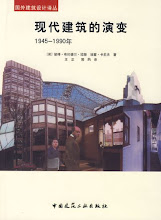



Scarpa's spatial sense is more than adequately demonstrated by the space dominated by the effigy of the Veronese hero Can Grande della Scala. The statue had originally been placed over his tomb on a gate in the city, but after various proposals Scarpa chose to exhibit it as the key element of the museum visible from the courtyard and passed by the visitor’s route. It was placed on first floor level, so as to equate to its original elevated position but placed on a huge cantilevered pedestal with the result that it achieves a high degree of conceptual animation. Small bridges and balconies on either side allow for more intimate exploration of the sculpture, as Scarpa indicated in a sketch. But the treatment of the statue is only one element, for the great vertical space he occupies is as much on display as the warrior himself. The walls and roof of the block are successively delaminated, stucco removed to reveal stonework and brick, tiles removed to reveal copper and then the twin roof beams exposed to span onto the adjacent wall. This space with its highly articulated roof, akin to a medieval baldachino, announces the unity of sculpture and architecture which Scarpa sought for all the exhibits and museum spaces. That the visitor’s route should always pivot around this void is a testimony to Scarpa's skill in creating value by removing and revealing elements. The gesture of removal is a subtle reference to the recent history of the Castelvecchio since the ancient bridge adjacent to the Castelvecchio and the Can Grande space, the Ponte Scaglieri, was itself destroyed by Italian fascists in 1945, against the express command of the retreating German general Kesselring.






No comments:
Post a Comment